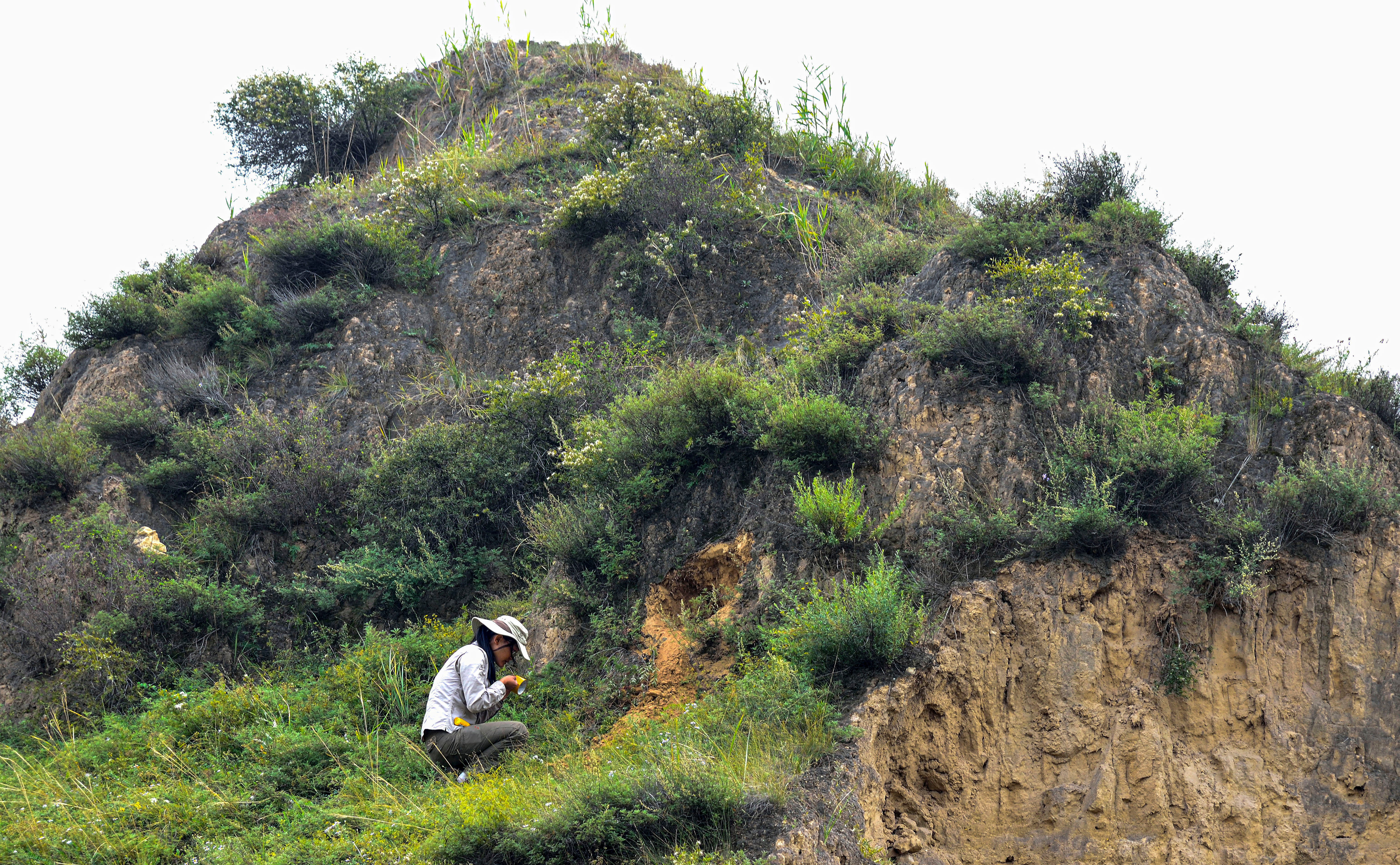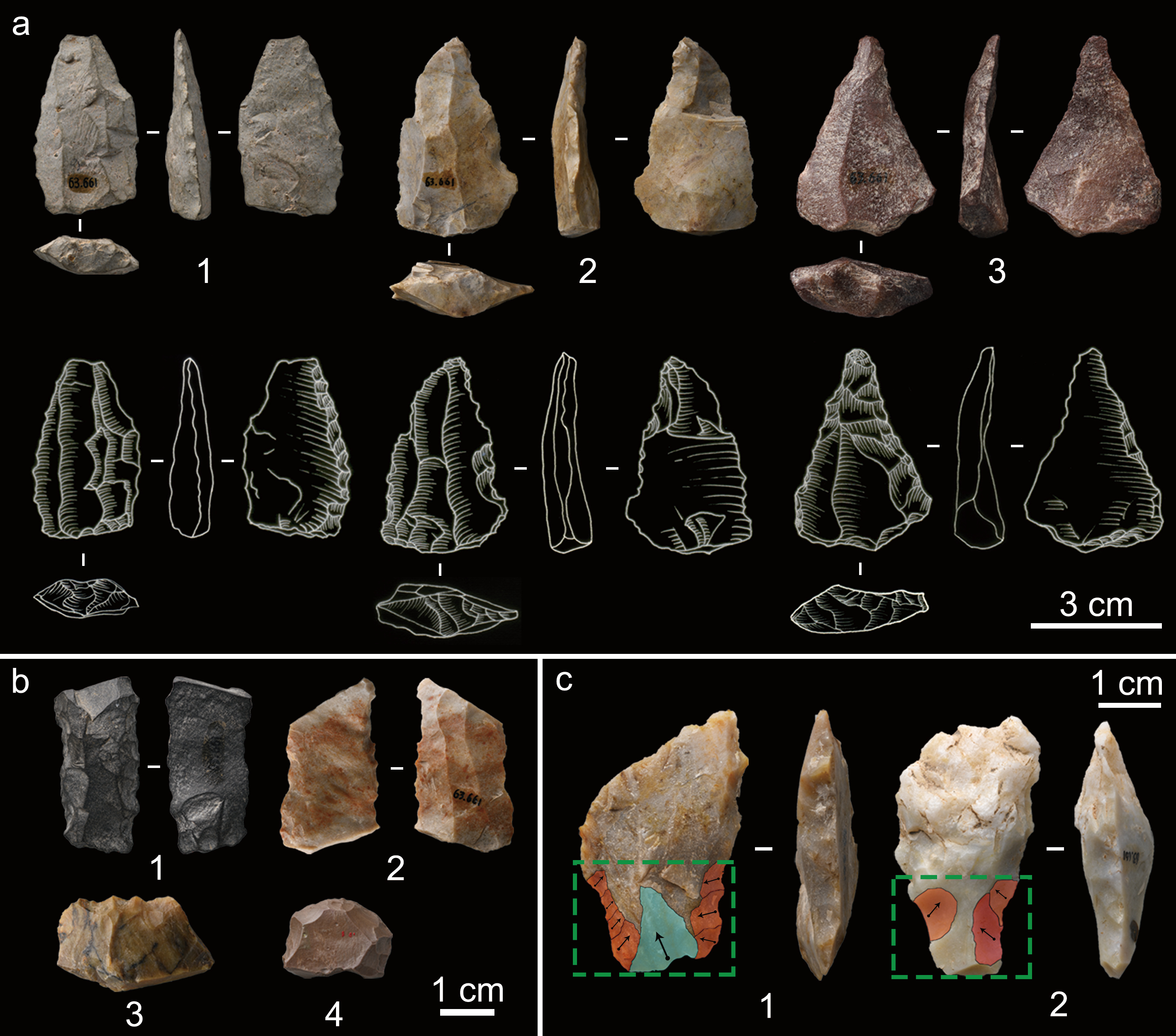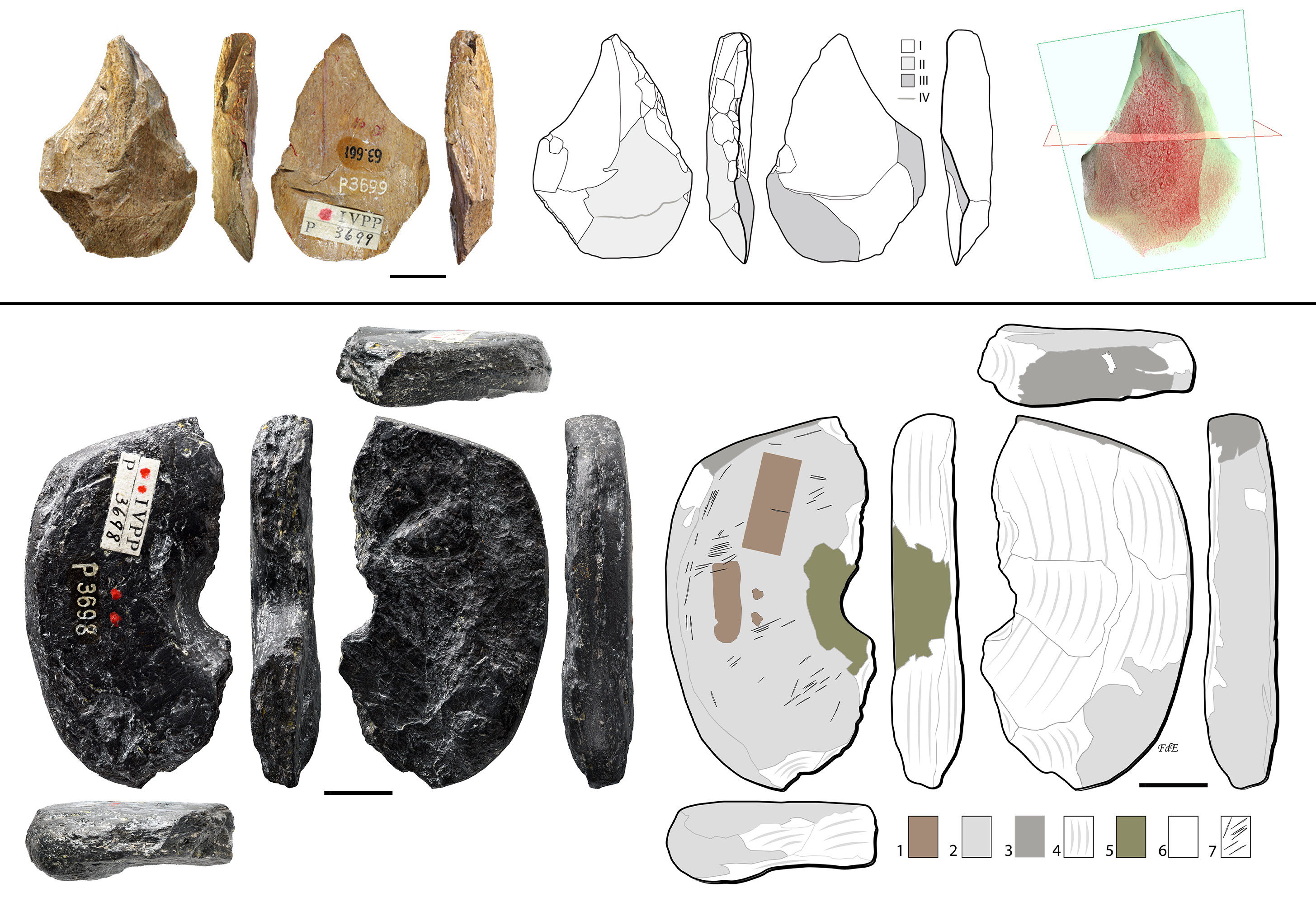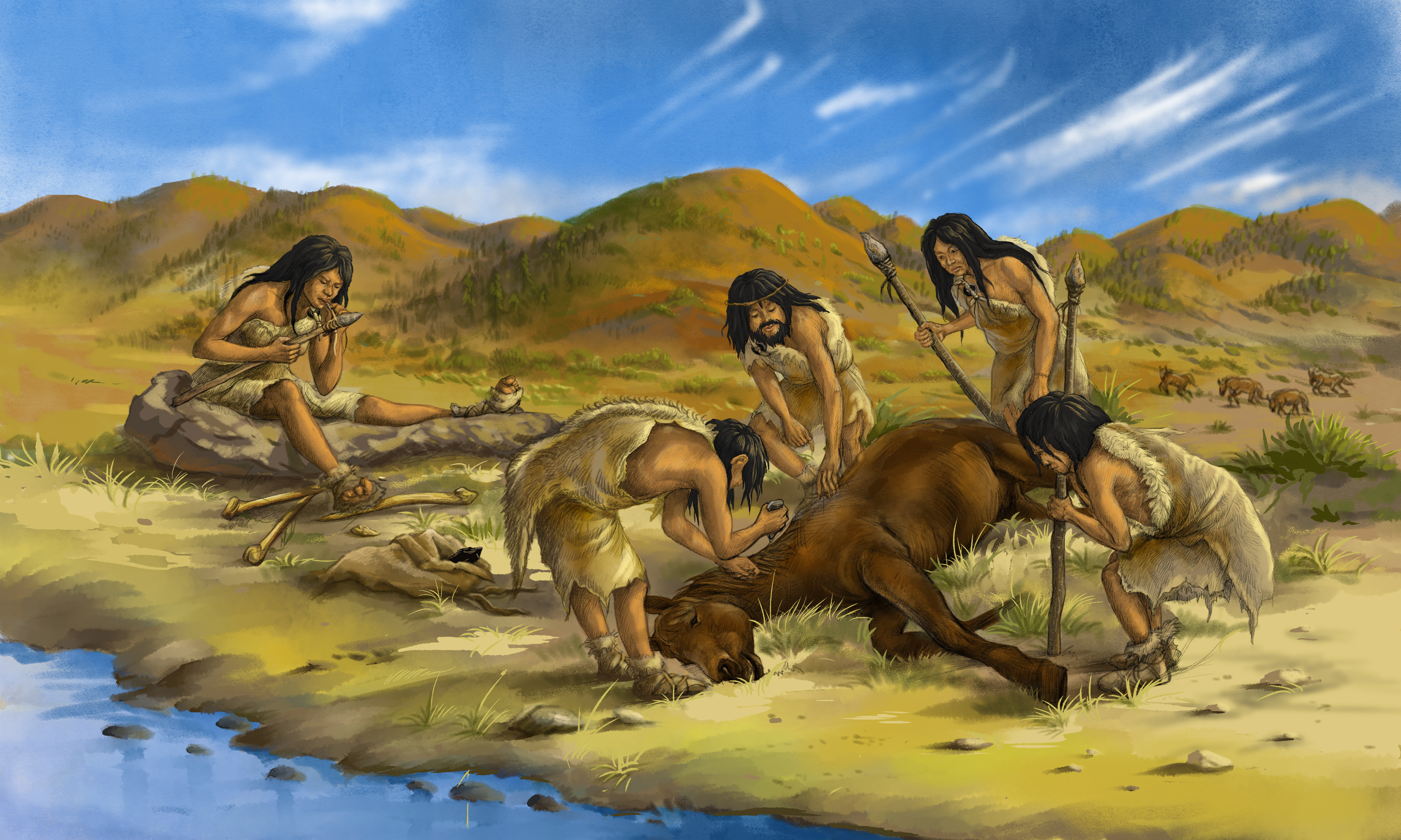Exploring the advanced material cultures 45,000 years ago in East Asia
Published in Arts & Humanities
The excavation of Shiyu traces back to 1963, conducted by the first generation of Palaeolithic archaeologists (led by Prof. Lan-Po Jia) from the Institute of Vertebrate Paleontology and Paleoanthropology, Chinese Academy of Sciences (IVPP, CAS). The excavators reported tentative data on the site stratigraphy, artefacts and fauna in 19721. After that, and until 2011, almost 50 years after the first excavation, Prof. Wei-Wen Huang from the IVPP (Lan-Po Jia’s former student and assistant), restarted the field investigations by sampling the stratigraphic section with Prof Jia-Fu Zhang from Peking University. The two senior scholars planned to update the age of the cultural layer, though the work stopped owing to the health of Prof. Huang. At the end of 2019, I came back IVPP after my postdoctoral fellowship in Germany. Prof Wei-Wen Huang passed all the artefacts to me and hoped that I could accomplish this research.

In the coming year, an interdisciplinary international team was formed by the archaeologists and geologists from IVPP (CAS), Peking University, Griffith University, Université de Bordeaux, Institute of Geology and Geophysics of CAS, University of CAS, the Institut Català de Palaeoecologia Humana i Evolució Social (IPHES), University of Oxford, Tohoku University and Max Planck Institute of Colloids and Interfaces. At the end of 2023, 60 years after the site was first excavated, the comprehensive research report of Shiyu site was accepted.
The age of 45,000 years ago makes Shiyu stand out as the earliest IUP site in East Asia, thus the chronological work at the site is a fundamental aspect of this research project. To obtain robust dating results, Prof Jia-Fu Zhang, the lead scientist for the chronological work, collaborated with the Oxford Radiocarbon Accelerator Unit. The geochronologists conducted accelerator mass spectrometry (AMS) radiocarbon dating and optically stimulated luminescence (OSL) dating. To accurately determine the time window of the archaeological collection, three animal bone samples with anthropogenic cutmarks, and recovered during the original 1963 excavation, were dated. OSL testing was conducted between 2013-2015 and 2020-2023, leading to thousands of hours of lab work. One of the reviewers commented, “Congratulations for the great work on untangling the complicated dating issues for such important site. I would like to see more such kind of chronological work been done in East Asia.”
Taphonomic analysis of the mammal fossils and the pollen evidence provided us with a picture of the landscape. Our study revealed a steppe environment with equids and cervids. In previous and current and studies1, cutmarks are well represented on bones, particularly on the meaty upper (humerus, femur) and intermediate limb bones (tibia, radius), indicative of defleshing activities. In fact, in the previous report, the Shiyu inhabitants were referred to as the “horse-hunters”.

As the site occupants were skillful hunters, the question arises, what kinds of weapons did these hunters use? To examine what kind stone tools were made and how they were used at Shiyu, we performed technological and typological analyses and microscopic use-wear studies. Shiyu exhibits a mix of stone tool reduction methods, including Levallois and Volumetric Blade Reduction methods, which are typical elements of Initial Upper Palaeolithic in western Eurasia, and also the traditional elements of Chinese core-flake industries. The Shiyu inhabitants were equipped by a remarkably advanced toolkit, including Levallois points, various tanged tools, end-scrapers, denticulates, bores, and awls. The microscopic use-wear analysis indicated that these tools were used in a variety of activities, for example, scraping against bone/hide, sawing actions in meat processing and hide working, cutting against hide and antler, and mainly related to exploitation of animal resources.
What else we know about these hunters? There is a well-shaped bone tool, standing out among same kind of findings in East Asia, for its small size and symmetrical bifacial retouches. A shaped graphite disc is presented as well. As a personal ornament, it is quite large, with a diameter around 64-60 mm, so we deduced it could have functioned as a button to close, for example, a cloak or a bag. The discovery of these unique artifacts shows a rich cultural adaptation. Moreover, the long-distance transfer of obsidian, from the Changbai Mountains and Far East Russia, 800-1000 kilometers from Shiyu, are present in the assemblage. This indicates advanced resource procurement strategies and long-distance of exchanges.

Shiyu provides us a glimpse into the unique cultural behaviours and technological innovations of human popularions in North China around 45,000 years ago. We believe these populations were our own species, as a now lost human cranial bone was identified by the biological anthropologist Woo Ru-Kang as H. sapiens in the original exaction report1. Taken together, the evidence uncovered at Shiyu challenges conventional beliefs about the dispersal of Homo sapiens populations. The work at Shiyu is consistent with our earlier publication about the innovative behaviors at the Xiamabei site2, leading to new narratives about the history of modern humans in East Asia.

1.Jia, L. P., Gai, P. & You, Y. Z. The report of excavation at Shiyu site in Shanxi Province. Acta Archaeol. Sin. 1, 39–58 (1972).
2. Wang et al., Innovative ochre processing and tool use in China 40,000 years ago. Nature, 2022, 603: 284-289.
Follow the Topic
-
Nature Ecology & Evolution

This journal is interested in the full spectrum of ecological and evolutionary biology, encompassing approaches at the molecular, organismal, population, community and ecosystem levels, as well as relevant parts of the social sciences.
Related Collections
With Collections, you can get published faster and increase your visibility.
Understanding species redistributions under global climate change
Publishing Model: Hybrid
Deadline: Jun 30, 2026

Please sign in or register for FREE
If you are a registered user on Research Communities by Springer Nature, please sign in